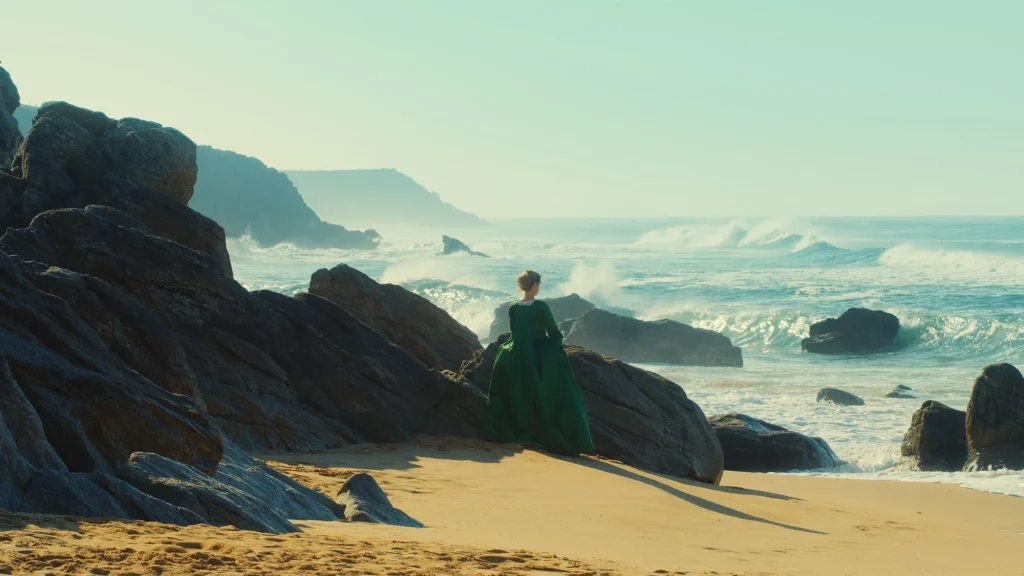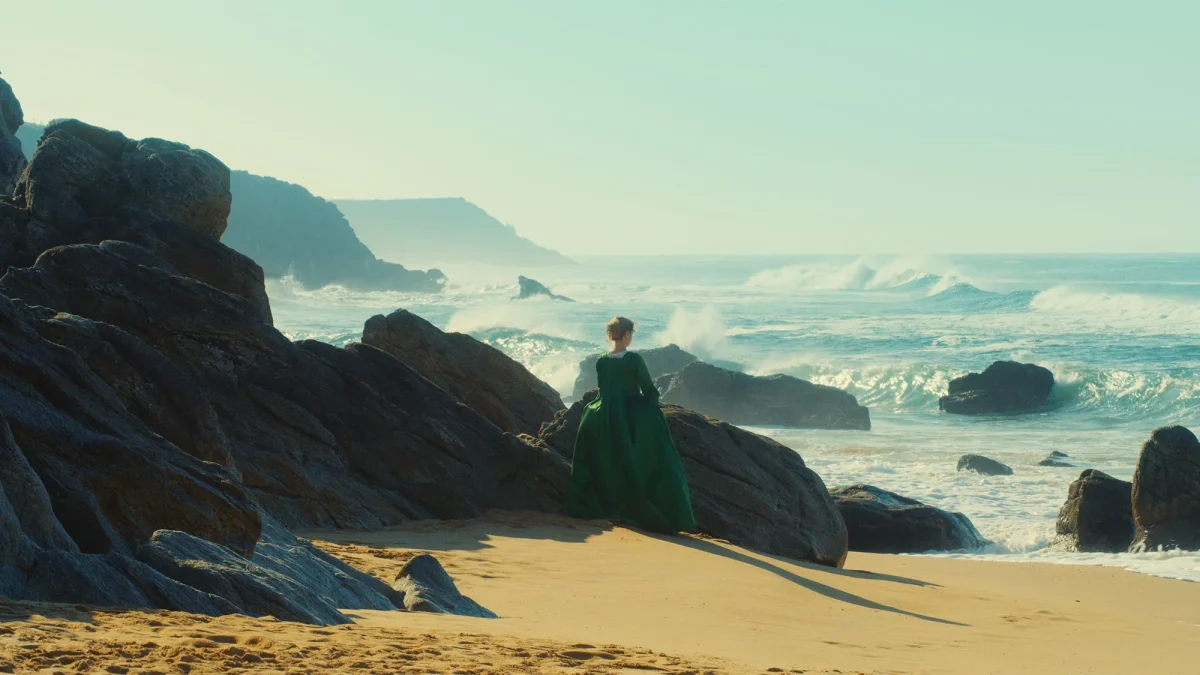by Hazel Anna Rogers for the Carl Kruse Arts Blog
Without consulting a reputable source that might satisfactorily define what ‘Landscape Cinema’ might be, I am left to define it myself. Alone, in suburbia, the low drone of midweek traffic humming through my windowpanes, I am to consider what I mean when I designate a film to fall into the category of landscape cinema.
It is always better to give examples when defining a concept, but I will give a brief explanation as to what I mean by the term landscape cinema. In my eyes, landscape cinema is cinema that employs the landscape not as a path on which its characters tread, but as a character in its own right. In the films I will discuss, the landscape sleeps and wakes and breathes and dreams and argues and laughs along with its human protagonists; it demands as much attention from its viewers as the actors that walk amongst it. Landscape cinema can manifest in narrative pacing, whereby the events in a film seem to mirror that which is occurring in the natural landscape; on the other hand, it can occur as an inevitable result of a film whose focus IS the natural landscape and its effects on the people that live within it.
Of what I have seen of it, I love landscape cinema. Perhaps it is partly to do with my penchant for slower-paced films, but to me it seems that filmmakers who take the landscape and use it to reinforce the story being told on screen create works that have a great thickness and richness to them; these are films that remind us we are but flesh walking atop a merciless earth.
There are a wealth of movies that fall into this category, most of which I have not seen – many are obscure titles that are difficult to find and watch, and many are documentaries. I will focus my efforts instead on the films I have seen and which I deem suitable for the categorisation I have proposed.

A very long time ago, my mother had a subscription to ‘LOVEFILM’, which was the precursor to ‘Amazon Prime Video’. She’d get DVDs delivered through our door and we’d watch them together, often on a Friday with a bowl of buttered pasta on our laps. I remember a film I must have seen when I was about 14 years old called Le Grand Bleu (The Big Blue, Luc Besson, 1988), a film that chronicles the devastating and glorious power of water Jacques Mayol (played by Jean-Marc Barr), its protagonist, is an accomplished free diver drawn to the deep, the deep blue, the wide blue, the blue that stretches out as far as the eye can see. Whatever might happen on land, and much does indeed happen, Jacques finds solace in the quiet beneath the waves. For much of the film, director Besson places his viewers under the water. It is difficult to think of any other times we are subjected to this kind of imagery, save for in nature documentaries. In Jacques’ waking life, he finds himself falling into strange hallucinations, and his dives become increasingly extreme throughout the course of the film culminating in his ‘final dive’. Facilitated by Éric Serra’s surreal, dreamy soundtrack, Le Grand Bleu is a hallmark of landscape cinema that stares nature in the eyes and beckons it to fill the screen with its impulsive, changeable character.
A few months back, The Prince Charles Cinema in Leicester Square screened a few films by Andrei Tarkovsky, one of which was his last feature, completed just before his death: The Sacrifice (1986) a Pagan-Christian parable about a man (Alexander, played by Erland Josephson) who attempts to bargain with ‘God’ to stop the impending nuclear holocaust. The Sacrifice is a lonely film, shot in a place that seems as though it could already be a cemetery of post-nuclear fallout. It was filmed on the southeast coast of Gotland, Sweden, in a peninsula called Närsholmen, a savanna-like nature reserve of grass and stone and sea. A person walking through this landscape could be seen from miles around, and this is key to the film. There is nowhere to hide, nowhere to shelter save for the house where our Alexander lives with his family, and the house down the winding road where Maria, the family’s pagan maid, lives.
Desperate hope rings as a central theme for the film, and yet the landscape itself speak of hopelessness, of isolation and separation from the mainland, from the people, from time itself. This is a land without time, without dates or days or weeks or years. The Sacrifice speaks also of the strangeness with which we perceive nature and the landscape; when I am out and about in the forest, beside the sea, in fields, by ponds, I become acutely unaware of the implications of pollution, of warfare, of the ongoing decline of the natural world as a result of climate change. I am here, in the trees where the birds chirp, and all is well. Isn’t it? In the world of The Sacrifice, we are left wondering what exactly would change, or has changed, in the event of nuclear disaster. Would the lives of these people, far from everything, change? Would the landscape change, or would it simply breathe differently; where before, it breathed the clear salty air of the sea, would it heave and splutter beneath the surface, invisibly clogged with nuclear waste that would manifest in deformities of its flora and fauna?
Where the landscape of The Sacrifice stands as an onlooker as its character slowly fall into despair, in Peter Weir’s Picnic at Hanging Rock (1975), we witness a different landscape, one of a much more insidious nature. Here, the malevolence of the landscape is pinnacle to the tale itself, a tale of private school girls disappearing at a picnic in rural Australia. The ‘hanging rock’ of the title is situated in rural Victoria, and is a towering volcanic formation – called a ‘mamelon’ – which is created by a particularly stiff variety of lava which solidifies as it travels. The result is the rugged, maze-like structure that the young girls are drawn to explore during the picnic. There is something in these rocks, something inexplicably terrible but which remains unnamed and unseen throughout the film, save for a few strange lights, colours, and memories told from the eyes of the girls who survived the experience. The otherworldliness of this film, and of its depiction of the Australian landscape, was facilitated by the brilliant cinematographic techniques of Weir and DOP Russell Boyd, who were inspired by British photographer David Hamilton to drape fabric over their lenses to create the dreamlike visuals in the film. In Picnic at Hanging Rock, Weir dwells on the rock itself, on its grandeur, its coldness, how it pierces the sky, how it takes the girls in and hides them from view.
Nature is often perceived as the ideal, as the ultimate in purity; current trends in diet and fitness are geared towards eating closer to the ‘earth’, or how our ‘ancestors’ used to eat and move. We forget that many of our ancestors were pillaging colonialists, and often even warmongering rapists, and that the majority of fruits and vegetables that we eat today have been manufactured over hundreds of years to make them edible to us, where before they might have been too fibrous or even downright poisonous.
Nature is not always our friend – nature is cruel, nature is merciless, nature lacks consciousness, morality, kindness. In Picnic at Hanging Rock, Weir shows us the brutality of the landscape, its inhospitability, and, ultimately, our complete lack of understanding of it. With all our advancements in technology, industry, and all the rest, we are still powerless in the wild. Weir’s rock is a fearsome antagonist, and Picnic at Hanging Rock is a wondrous example of landscape cinema.
And then, there are the instances where the landscape watches. It stands and watches from behind bushes and rocks and trees to see what we will do next. It is silent, but it is not benevolent. Here, I speak on Godland (Hlynur Pálmason, 2022) and L’Avventura (Michelangelo Antonioni, 1960). To speak of them in parallel, and to witness them as such, we might see, from the perspective of landscape cinema as a concept, some innate similarities between these two films. In these films, we see two separate rugged isles pushing humans to the brink, both emotionally and physically. Nature watches from the sidelines of L’Avventura as its protagonists, Claudia (Monica Vitti) and Sandro (Gabriele Ferzetti) search desperately for a trace of their lost companion. It is as though the land had eyes, for it stares at these lost people through cracks in rocks, from behind bushes, from the coastline. The sea batters the shore of the island of Lisca Bianca, where much of the film was shot, and the body of the missing woman is never recovered. What are we meant to feel? The emotions of these people are as unreadable as the landscape itself; beautiful yet unfriendly, cold yet at times joyous.
In L’Avventura, the landscape blends with its characters to make something inexplicably poignant. In Pálmason’s Godland, we see something else; the presence of the landscape within a character: Ragnar (played masterfully by Ingvar Sigurðsson) the leader of the Icelandic group guiding a Danish priest (played by the brilliant Elliott Crosset Hove) to the southeast coast of Iceland so he can build a church and spread the word of God. Ragnar is the rugged barrenness of the icescape, and the fairytale beauty of waterfalls plunging down from flower-covered precipices, and the quiescence of water lapping before a half-built wooden church. As in L’Avventura, Ragnar watches with a silent, all-knowing eye. He can read the skies and the water like they were words written in a book, and he is as humble as the horses he rides. But our protagonist – Lucas, the Danish priest – is a most wondrous contrast to the weather-worn Ragnar. In him is modernity, is the rejection of the ways of the land, is technology and callousness and colonialism, all in the name of God. In Godland, the landscape is fractured, and the calm existence of a people is disrupted by the oncoming tide of foreign religion, domination, and greed.
Ah, I could speak for hours on this. I have a list beside me with all the other films I was going to talk about, but perhaps we should leave this here for now. I can’t say for certain why I was drawn to speak on this, but perhaps it is something to do with the low drone of traffic outside my windowpanes, and the rumble of trains beneath my feet, and the sky, obscured by the rooves of the houses on the other side of the street. Perhaps it is that, despite all of their violence and coldness and mercilessness, I long to be in the landscapes that I see on my screen, away from the blinding noise of the city.
Perhaps I just need some peace.
————————
The Carl Kruse Arts Blog Homepage is at https://carlkruse.net
Contact: carl AT carlkruse DOT com
Other articles by Hazel include: The New Art, Ememem, and Film Scenes I Wish I Had Never Seen.
Also find Carl Kruse on Fstoppers and on Carl Kruse at Stage 32.
